Hurricane Michael leaves a seaside Florida town in an existential crisis
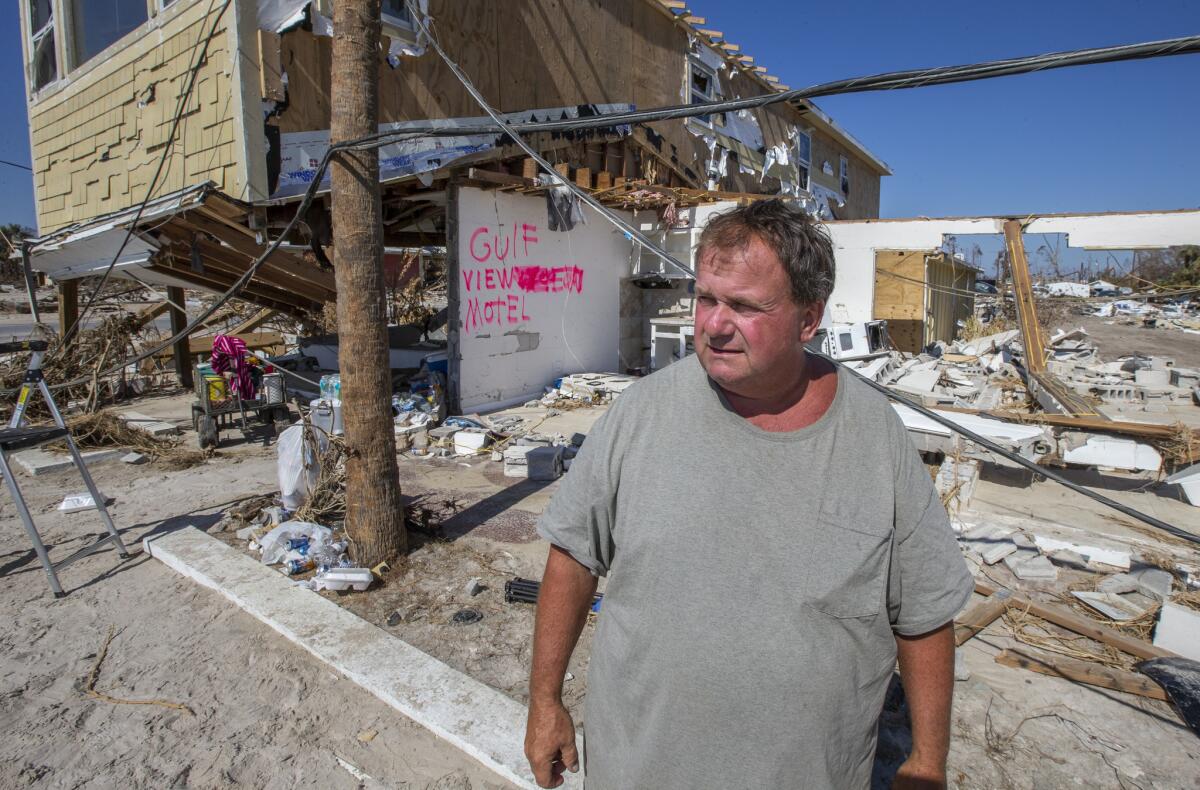
- Share via
Reporting from MEXICO BEACH, Fla. — For generations, families have come to Mexico Beach to soak up old-style Florida: the mom-and-pop seafood shacks, the dinky one-story motels and pastel bungalows, the retro ice cream parlor with claw machines and vintage arcade games.
But Hurricane Michael, which less than two weeks ago pummeled the tiny seaside town with 155-mph winds and demolished roughly three out of every four buildings, has left the community in an existential crisis. Nobody is sure what comes next.
Many residents and business owners, anticipating massive insurance shortfalls, have yet to decide whether to commit to the daunting challenge of rebuilding structures strong enough to withstand the next big storm.
About a third of the town’s 1,200 full-time residents are senior citizens. Many homes were not covered by flood insurance. A vast swath of older ranch-style homes and commercial structures sat at ground level and did not meet the state’s current elevation and windstorm requirements.
“They’re gonna make you build so heavy duty, you can’t afford to rebuild,” said Charles “Chuck” Smith, 56, owner of the Gulf View Motel, a modest 1940s-era building that his parents bought in the mid-1980s.
Now it is rubble. Wind, water and debris wrecked the concrete walls, gutting the kitschy rooms with tiny kitchenettes, sweeping away the queen beds with peach and turquoise bedspreads patterned with seashells.
“We’re not a rich community, and pretty soon we’re going to be priced out,” he said. “We’re going to see million-dollar homes, I’m pretty sure.”
Mexico Beach was woefully unprepared for a Category 4 hurricane: While new structures across South Florida must be built to withstand winds of around 175 mph, buildings in this stretch of Florida’s panhandle are required to sustain winds of only 130 mph. Older buildings are exempt.
As residents began to grapple with insurance claims and apply for federal assistance, engineering experts and policymakers said current building codes should be tightened to make future homes more resilient. Some questioned whether, in an age of rising sea levels, it made any sense to rebuild so close to the beach.
The challenge is building stronger homes that can withstand higher wind speeds and greater storm surges — without destroying the town’s family-friendly vibe and making it unaffordable for blue-collar workers and retirees.
“You’re starting to see this concern about the haves and the have-nots when you talk about adapting to climate,” said Craig Fugate, former administrator of the Federal Emergency Management Agency who lives in Gainesville, Fla. “How do we build resiliency in communities without leaving behind the majority of the workforce?”
“I’m afraid we’re going to run into a situation where only the wealthy can afford to rebuild and the people that work in the economy — the teachers, the nurses, the paramedics, firefighters, police officers, sheriff’s deputies, people who work at the grocery store — may very well be priced out of their homes.”
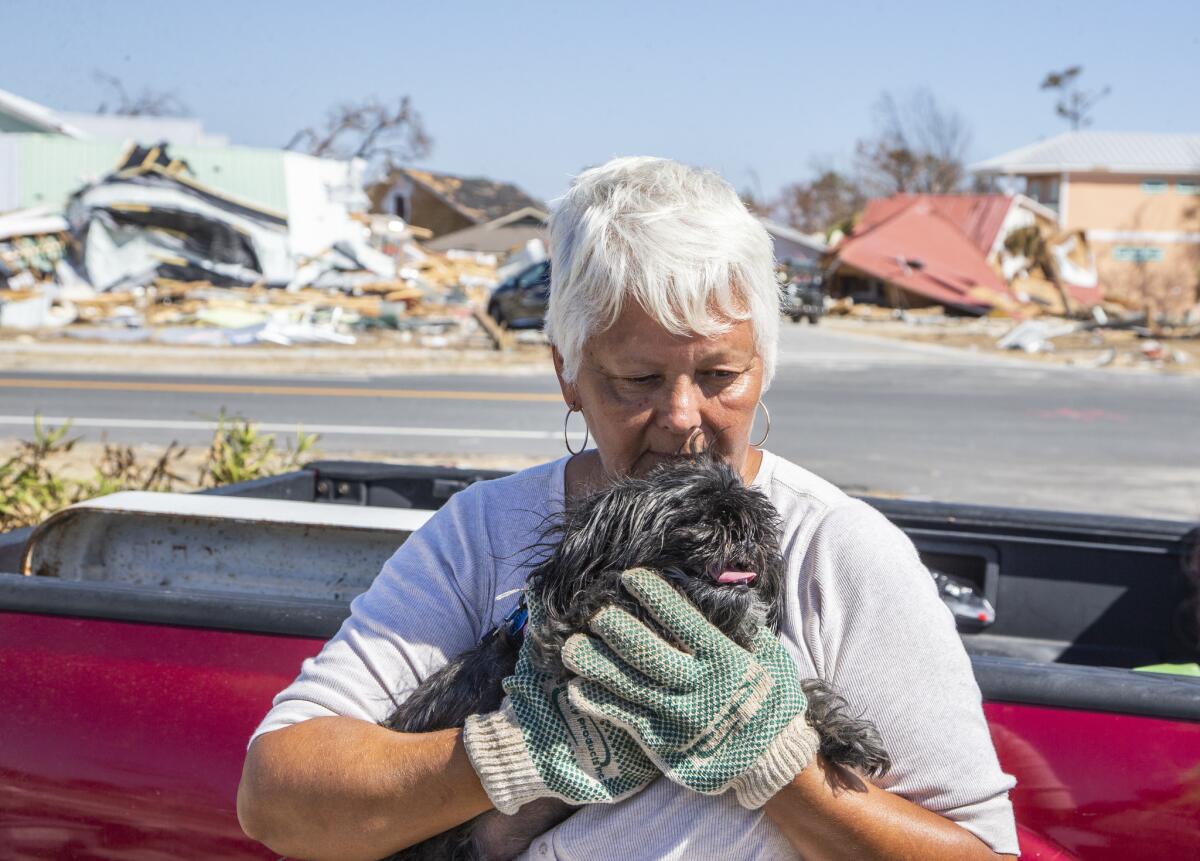
Mayor Al Cathey, 71, whose family has owned a hardware store here since 1974, is confident the majority of the town’s residents will come back, pulled by their memories and nostalgia for a slower pace of life.
Many of the homes have been in families for generations. But some older residents, Cathey feared, would likely look at the devastation and give up.
“Emotionally, everyone wants to stay,” he said. “The question is what’s it going to take to build financially? And will we lose what we thought of us our charm? It’s going to change the landscape of our community.”
Hurricane Michael washed away the wooden pier where families hauled buckets of bait and fishing rods in the hope of catching pompano, Spanish mackerel and flounder. It gutted one of the town’s biggest landmarks, the four-story El Governor Motel. It razed Tommy T’s, a beloved ice cream store founded in 1983, where kids lined up to order sno-cones and play Pac-Man and Galaga.
“It’s overwhelming,” said Tammy Pullen, 51, who lives part-time in a town home behind Tommy T’s, as she climbed around splintered plywood and corrugated metal, looking for her possessions amid packs of Starburst candy, sunhats, scuba masks and quarters. “I’m just hoping we can clean it all up and it will be the little quaint place it was.”
Stretching for about three miles along U.S. Route 98, Mexico Beach was never a brash tourist strip or fancy playground for the rich. There are no high-rises or big-box stores, no theme parks or mini malls, as in Panama City Beach, 30 miles west. The town does not have a traffic light, and the only chain restaurant is a Subway.
As other towns along the Florida coastline became more commercialized, city leaders here developed strict zoning rules that ban the construction of new residential buildings taller than 32 feet or commercial buildings above 48 feet.
Outside City Hall last week, a steady stream of residents filed under a shade tent to register with FEMA.
Wanda Walker, 84, arrived in a wheelchair with her son, David, to apply for federal assistance.
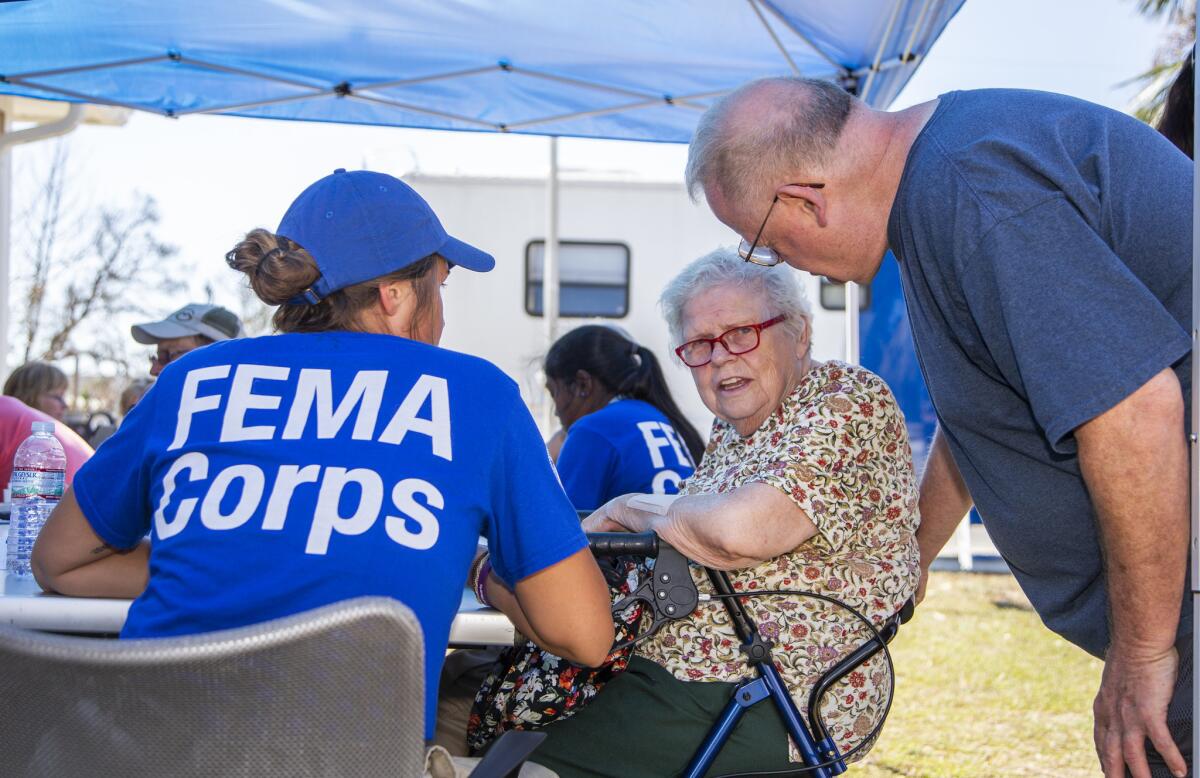
She moved to Mexico Beach from Michigan more than four decades ago to escape the cold weather and settled in a one-story home four blocks from the beach. Now she was staying with family in Tallahassee while sodden beds and carpet were pulled out of her house. The family had no idea when she could move back in.
“This is a real bad devastation for her,” said her son — whose Dixie Dandy grocery store one town over was also destroyed — as a FEMA worker asked questions and typed on a small computer.
Block after block, there were problems.
Mike Danner, 72, was not sure how he and his wife, Dana Schere, would rebuild after the storm surge warped the floor joists in their one-story stucco home and winds ripped a hole in their roof. They did not have flood insurance.
“If water touched it, it’s not covered,” his insurance adjuster said one day last week as he walked inside the damp, sand-strewn home, inspecting the water line. “Above 6 to 9 inches up, you’re covered.”
Cellphone in hand, Danner stepped over a tree limb as he relayed the information to his wife, who had heart problems and was recuperating at a hotel about 80 miles away.
“Don’t worry about it, dear,” he tried to reassure her.
But there were many other sources of anxiety. Danner said he has no savings, and he has yet to be called back to his mechanic’s job at the nearby Tyndall Air Force Base, which was pummeled in the storm.
Faith Bostick, 79, a retiree from Georgia who lived in Mexico Beach half the year, said her family’s mobile home was a total loss. It had a large hole in its roof. As temporary residents, they were unlikely to get assistance from FEMA.
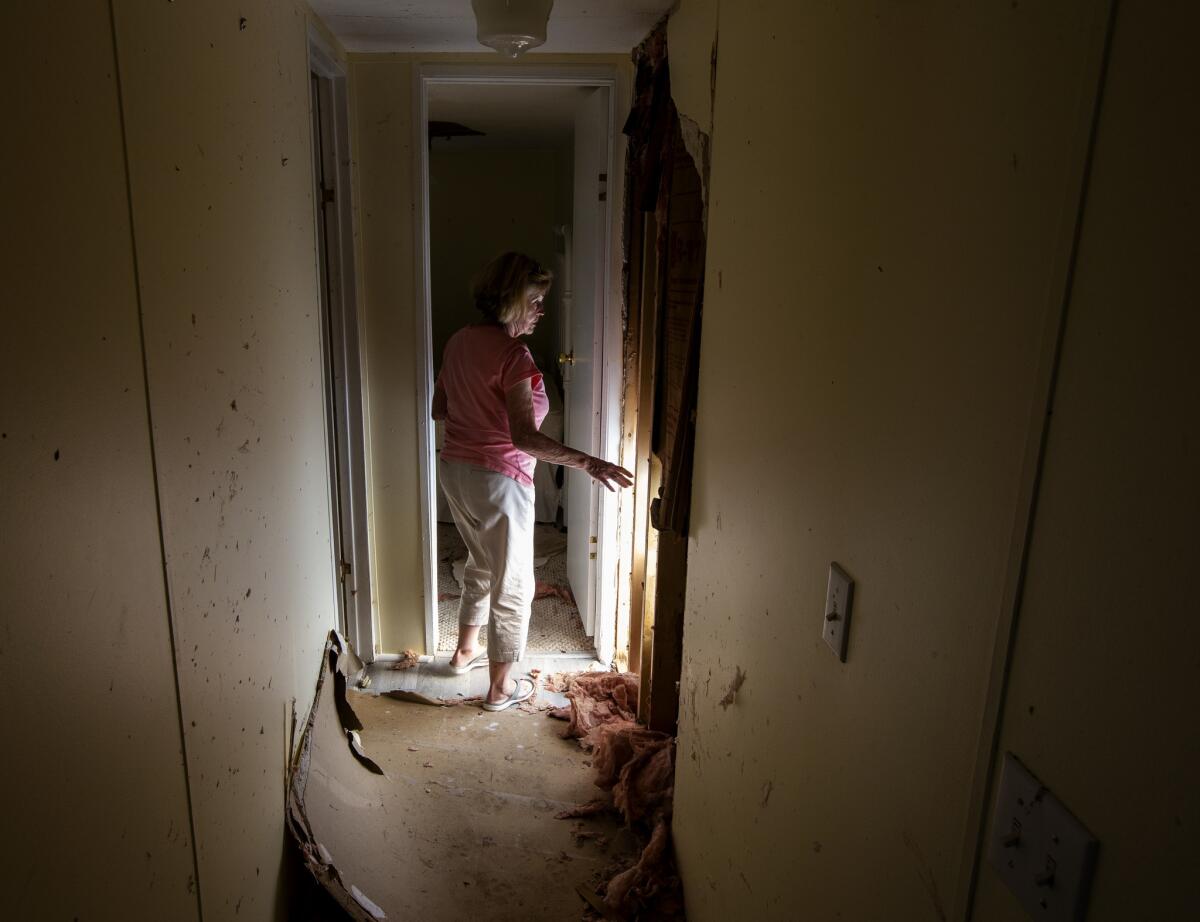
“We could haul in a new one,” she said. “But will they allow new trailers in here?”
If they couldn’t afford to rebuild to current code, they would most likely haul the old trailer away and keep the land for their children and grandchildren.
For some residents, the future depended on their neighbors.
Though his one-story home made it through the storm with minor cosmetic damage, Rick Sanders, a 47-year-old firefighter from Thomasville, Ga., said he worried his neighbors on 6th Street would not be able to rebuild and developers would swoop in and put up condos.
“This is our away family,” he said as his next-door neighbor, Millie Wright, a retired human resources manager from Marietta, Ga., rested on his front porch. Her mobile home was destroyed.
“We don’t want to stay here if we lose all our neighbors,” Sanders said.
Margie Daniel, 71, a retiree from LaGrange, Ga., who owned a two-story vacation condo — now gone — was uncertain if her neighbors would be committed to rebuilding the five-unit structure to more stringent building codes.
“It may be much more expensive,” she said. “And what do we do if we don’t all want to do the same thing?”
With city infrastructure completely wiped out, Michael Scoggins, 61, co-owner and chef of Killer Seafood, a laid-back joint that served fish tacos and po’ boys, figured it would be years before he could reopen in town. He was scrambling to open a new restaurant in a vacant development seven miles east.
The plan is to have it running in three months, retaining his 10 employees and hiring 10 more.
“It will be a positive symbol for the community,” he said.
Other business owners feared it would be a while before tourists, their main customers, would return to Mexico Beach.
“I don’t know what to do,” George Hunter, 55, the owner of the Shell Shack, said as he entered his ruined seafood store and gift shop last week and navigated a caved-in floor to salvage stacks of sodden green folders from a filing cabinet. “This is all I’ve ever known.”
His business, founded by his parents in 1965, was unrecognizable. Hurricane Michael had torn up the old pine walls, ripped up the roof and tossed over ice chests, freezers and a cash register. The structured reeked of fish — 3,600 pounds of spoiled shrimp, worth about $30,000 wholesale.
Hunter grew up manning the register, cleaning grouper and snapper, heading shrimp, and hoped to rebuild the family store. But he had no idea how much it would cost to build to current codes, and he fretted about the fate of his two sons, Zach and Nick, who were full-time employees.
Even if he could rebuild in the next year, he worried it would be several years before there would be enough motels and rentals for tourists, which made up 90% of his customer base.
“How long is it going to take to come back?” he said. “Nobody can really tell you. We’re in limbo.”
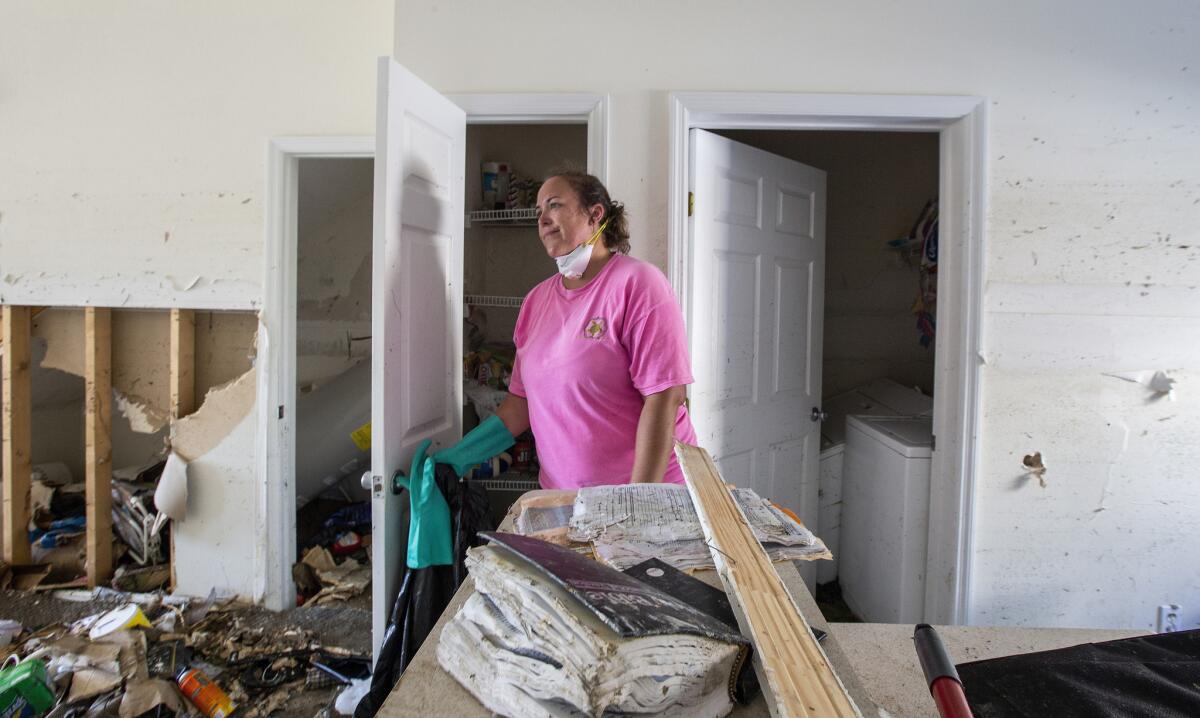
Twitter: @JennyJarvie
More to Read
Sign up for Essential California
The most important California stories and recommendations in your inbox every morning.
You may occasionally receive promotional content from the Los Angeles Times.











